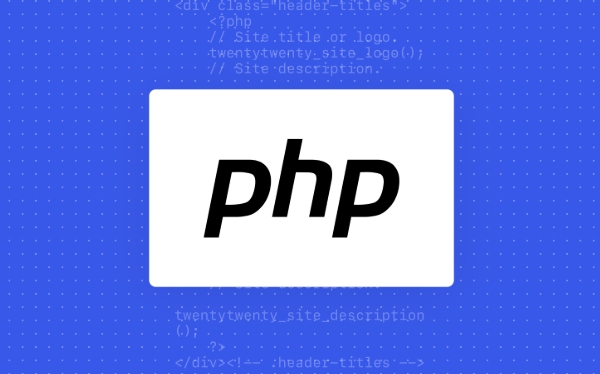To ensure a PHP array has an exact size, use a combination of array_slice() and array_pad(). 1. First, slice the array to the target size to remove excess elements. 2. Then, pad the sliced array to ensure it meets the desired length. This method works for both trimming and extending arrays, though padding associative arrays requires custom logic due to array_pad()'s reliance on numeric indexes.

If you need to make sure a PHP array has a specific number of elements — filling in the blanks if it's too short or trimming it down if it's too long — there’s a straightforward way to do it. The built-in array_pad() function helps with part of this, but it only adds items when the array is smaller than desired. To strictly enforce a size, including cutting off extra elements, you’ll want to combine a couple of steps.

Use array_pad() to Extend an Array
PHP’s array_pad() function is perfect for making sure your array isn’t too small. It takes three arguments: the original array, the target size (positive or negative), and the value to pad with. If the array is already larger than the specified size, array_pad() won’t trim it — it just leaves it alone.

$array = [1, 2]; $padded = array_pad($array, 5, null); // [1, 2, null, null, null]
This works well when you know you always want at least N elements, but not when you need exactly N elements.
Tip: You can use a negative number for the size to pad to the left instead of the right:

$padded = array_pad($array, -5, null); // [null, null, null, 1, 2]
Trim or Slice to Limit Size
If the array might be longer than your target size, use array_slice() to cut it down. This function lets you extract a portion of the array — starting from index 0 and taking N elements:
$array = [1, 2, 3, 4, 5]; $trimmed = array_slice($array, 0, 3); // [1, 2, 3]
You can combine this with array_pad() to ensure that your array always ends up exactly the size you want:
- First, slice the array to avoid overflows.
- Then, pad it to fill any gaps.
Combine Padding and Trimming for Exact Size
Here’s a simple function that ensures an array is always exactly the size you specify:
function fixArraySize(array $array, int $size, $padValue = null): array {
return array_pad(array_slice($array, 0, $size), $size, $padValue);
}Examples:
$input = [1, 2]; $result = fixArraySize($input, 5); // [1, 2, null, null, null] $input = [1, 2, 3, 4, 5, 6]; $result = fixArraySize($input, 4); // [1, 2, 3, 4]
This approach handles both cases cleanly without needing extra logic or loops.
One thing to note:
- If you're padding associative arrays,
array_pad()won't work as expected because it only uses numeric indexes. In that case, you'll need a custom loop to generate keys yourself.
So depending on your data structure, you may need to adjust how you apply padding.
Basically, that's all there is to it.
The above is the detailed content of how to pad a php array to a certain size. For more information, please follow other related articles on the PHP Chinese website!

Hot AI Tools

Undress AI Tool
Undress images for free

Undresser.AI Undress
AI-powered app for creating realistic nude photos

AI Clothes Remover
Online AI tool for removing clothes from photos.

Clothoff.io
AI clothes remover

Video Face Swap
Swap faces in any video effortlessly with our completely free AI face swap tool!

Hot Article

Hot Tools

Notepad++7.3.1
Easy-to-use and free code editor

SublimeText3 Chinese version
Chinese version, very easy to use

Zend Studio 13.0.1
Powerful PHP integrated development environment

Dreamweaver CS6
Visual web development tools

SublimeText3 Mac version
God-level code editing software (SublimeText3)
 PHP Variable Scope Explained
Jul 17, 2025 am 04:16 AM
PHP Variable Scope Explained
Jul 17, 2025 am 04:16 AM
Common problems and solutions for PHP variable scope include: 1. The global variable cannot be accessed within the function, and it needs to be passed in using the global keyword or parameter; 2. The static variable is declared with static, and it is only initialized once and the value is maintained between multiple calls; 3. Hyperglobal variables such as $_GET and $_POST can be used directly in any scope, but you need to pay attention to safe filtering; 4. Anonymous functions need to introduce parent scope variables through the use keyword, and when modifying external variables, you need to pass a reference. Mastering these rules can help avoid errors and improve code stability.
 How to handle File Uploads securely in PHP?
Jul 08, 2025 am 02:37 AM
How to handle File Uploads securely in PHP?
Jul 08, 2025 am 02:37 AM
To safely handle PHP file uploads, you need to verify the source and type, control the file name and path, set server restrictions, and process media files twice. 1. Verify the upload source to prevent CSRF through token and detect the real MIME type through finfo_file using whitelist control; 2. Rename the file to a random string and determine the extension to store it in a non-Web directory according to the detection type; 3. PHP configuration limits the upload size and temporary directory Nginx/Apache prohibits access to the upload directory; 4. The GD library resaves the pictures to clear potential malicious data.
 Commenting Out Code in PHP
Jul 18, 2025 am 04:57 AM
Commenting Out Code in PHP
Jul 18, 2025 am 04:57 AM
There are three common methods for PHP comment code: 1. Use // or # to block one line of code, and it is recommended to use //; 2. Use /.../ to wrap code blocks with multiple lines, which cannot be nested but can be crossed; 3. Combination skills comments such as using /if(){}/ to control logic blocks, or to improve efficiency with editor shortcut keys, you should pay attention to closing symbols and avoid nesting when using them.
 How Do Generators Work in PHP?
Jul 11, 2025 am 03:12 AM
How Do Generators Work in PHP?
Jul 11, 2025 am 03:12 AM
AgeneratorinPHPisamemory-efficientwaytoiterateoverlargedatasetsbyyieldingvaluesoneatatimeinsteadofreturningthemallatonce.1.Generatorsusetheyieldkeywordtoproducevaluesondemand,reducingmemoryusage.2.Theyareusefulforhandlingbigloops,readinglargefiles,or
 Tips for Writing PHP Comments
Jul 18, 2025 am 04:51 AM
Tips for Writing PHP Comments
Jul 18, 2025 am 04:51 AM
The key to writing PHP comments is to clarify the purpose and specifications. Comments should explain "why" rather than "what was done", avoiding redundancy or too simplicity. 1. Use a unified format, such as docblock (/*/) for class and method descriptions to improve readability and tool compatibility; 2. Emphasize the reasons behind the logic, such as why JS jumps need to be output manually; 3. Add an overview description before complex code, describe the process in steps, and help understand the overall idea; 4. Use TODO and FIXME rationally to mark to-do items and problems to facilitate subsequent tracking and collaboration. Good annotations can reduce communication costs and improve code maintenance efficiency.
 Quick PHP Installation Tutorial
Jul 18, 2025 am 04:52 AM
Quick PHP Installation Tutorial
Jul 18, 2025 am 04:52 AM
ToinstallPHPquickly,useXAMPPonWindowsorHomebrewonmacOS.1.OnWindows,downloadandinstallXAMPP,selectcomponents,startApache,andplacefilesinhtdocs.2.Alternatively,manuallyinstallPHPfromphp.netandsetupaserverlikeApache.3.OnmacOS,installHomebrew,thenrun'bre
 How to access a character in a string by index in PHP
Jul 12, 2025 am 03:15 AM
How to access a character in a string by index in PHP
Jul 12, 2025 am 03:15 AM
In PHP, you can use square brackets or curly braces to obtain string specific index characters, but square brackets are recommended; the index starts from 0, and the access outside the range returns a null value and cannot be assigned a value; mb_substr is required to handle multi-byte characters. For example: $str="hello";echo$str[0]; output h; and Chinese characters such as mb_substr($str,1,1) need to obtain the correct result; in actual applications, the length of the string should be checked before looping, dynamic strings need to be verified for validity, and multilingual projects recommend using multi-byte security functions uniformly.
 Learning PHP: A Beginner's Guide
Jul 18, 2025 am 04:54 AM
Learning PHP: A Beginner's Guide
Jul 18, 2025 am 04:54 AM
TolearnPHPeffectively,startbysettingupalocalserverenvironmentusingtoolslikeXAMPPandacodeeditorlikeVSCode.1)InstallXAMPPforApache,MySQL,andPHP.2)Useacodeeditorforsyntaxsupport.3)TestyoursetupwithasimplePHPfile.Next,learnPHPbasicsincludingvariables,ech






